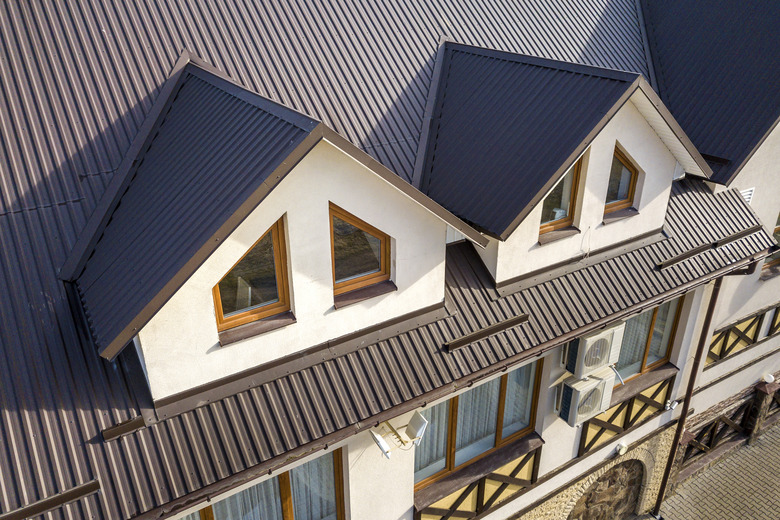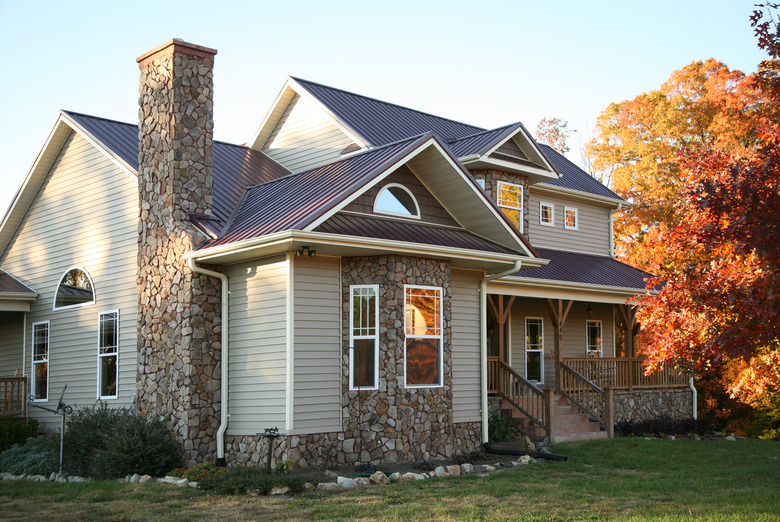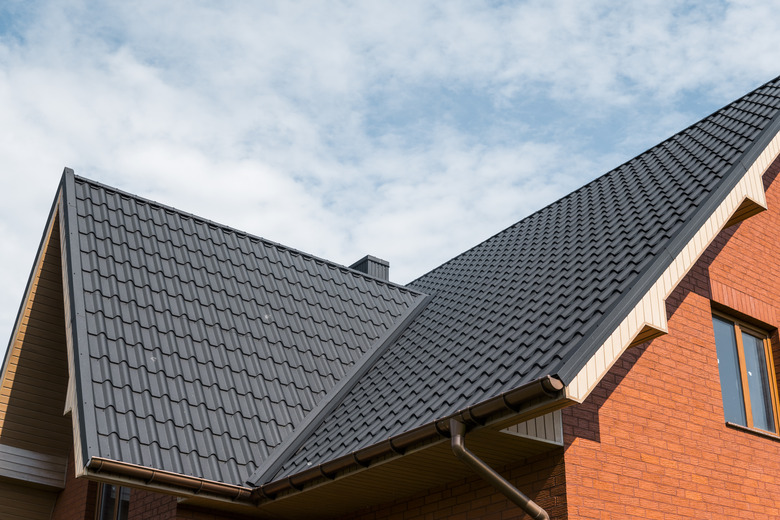9 Myths About Metal Roofing You Should Know
We may receive a commission on purchases made from links.
Metal roofing is an excellent choice when building a home or replacing an old roof. Unfortunately, homeowners dismiss it frequently thanks to many common myths and misconceptions about it. These myths are so pervasive that there are even roofing contractors who believe them. In reality, most of the negative things people believe about metal roofing are complete falsehoods.
Looking to install a new roof? You might want to reconsider a metal roofing system after we dispel these 9 common metal roofing myths.
Myth: Metal Roofing Is Ugly
Myth: Metal Roofing Is Ugly
Like most lasting falsehoods, this particular myth has a grain of truth to it. If your neighbor built a new shed and then slapped a corrugated tin roof on the top, it's easy to understand why you might think metal roofs are ugly. Some of them are, but these corrugated eyesores aren't used in residential roofing applications.
Modern metal roofs come in a wide variety of colors and styles, and many mimic the look of other materials. A metal roof can give you the look of slate, for example, without the weight of actual stone — while standard metal roofing panels are perfect for a mountain home or a modern farmhouse look. Make sure you look at a few metal roof samples before dismissing this option due to aesthetics. A metal finish for your exterior may just surprise you.
Myth: Metal Rusts
Myth: Metal Rusts
When roofers first began exploring metal as a roofing option, they applied it to the roof in long sheets and left it there without protection. These roofs did rust. Today's roofs don't have that issue, however. Modern metal roofs receive an alloy coating that protects against rust. Some get further protection in the form of special paint.
Today's metal roofs last for several decades without rusting. In fact, high-quality metal roof manufacturers warrant their products against rust. Some do so for as long as 25 years.
Myth: Metal Is Loud
Myth: Metal Is Loud
Like so many other metal roofing misconceptions, this one comes from the past. The metal roofs of the past were quite loud. While some people did (and still do) find it charming to lie in bed and listen to the rain on a metal roof, others find it annoying.
Today, roofers lay metal roofs over insulation to significantly dampen these noises. This works very well — so well that metal roofs are sometimes quieter than other roofing materials. No one can promise that you'll never hear the rain on a metal roof, but it certainly doesn't create the cacophony of sound it once did.
Myth: Metal Roofing Attracts Lightning
Myth: Metal Roofing Attracts Lightning
It certainly seems logical that metal would attract lightning, but metal roofs just don't work that way. Lightning is attracted to the highest point in a given area, so your roof could become a target. This is about height, however, and not about your roofing components.
Metal roofing experiences lightning strikes at the same rate as other roofs, and they're ultimately safer when they do. A lightning strike will travel through your roof on its way to the ground, but it won't set a metal roof on fire as it does so. Asphalt, wood, and other roofing materials are just as likely to get hit by lightning but are more likely to catch fire when they do take a hit.
Myth: Metal Roofs Make the House Hot
Myth: Metal Roofs Make the House Hot
Although people often fear that metal roofing will get hot and then make their home too warm, metal is one of the best materials for handling heat. Much of the light and heat from the sun reflects off the metal, keeping it cooler than asphalt and other dark roofs. The heat that is absorbed dissipates much more quickly as well. Homeowners often report a heating and cooling cost reduction after installing metal roofing with insulation.
Myth: You Can't Walk on a Metal Roof
Myth: You Can't Walk on a Metal Roof
Sometimes, it's necessary for you or a service professional to get on the roof. You may need to access your plumbing vent stack or clean your gutters, and you may have to walk on the roof to do so. Fortunately, walking on your metal roof won't cause it any harm at all.
You do, however, need to exercise extreme caution while you're up there, and take all appropriate safety measures. Some metal roofs are more slippery than asphalt, so wear a harness and always have someone on the ground who can get help if you need it. As always, don't get on your roof if you're not comfortable being there.
Myth: Hail Ruins Metal Roofing
Myth: Hail Ruins Metal Roofing
Of course, an unusually large piece of hail could damage a metal roof, but this is uncommon. Metal roofs have great hail-resistance, and contrary to popular belief, you won't likely find your metal roof full of dings or dents after a hail storm. In fact, metal roofs withstand hail better than a typical shingle roof.
Asphalt shingles are covered with a small granular material that helps protect them against UV rays and hail damage. During hail storms, these granules frequently get knocked off the shingles, taking away a little bit of their weatherproofing. If a piece of hail is large enough to puncture your metal roof, it would have caused cosmetic damage to most other roofing materials as well.
Myth: Metal Roofing Is Expensive
Myth: Metal Roofing Is Expensive
The cost of a roof replacement using metal roofing is typically between $5,000 and $15,000, with an average of $10,315. Replacement costs will vary based on the size of your house, the specific roof you choose, and labor rates in your area. This is comparable to the cost of an asphalt roof, which costs between $6,000 and $11,000. You also have to compare value along with cost.
Metal roofing can potentially help you save on your energy bill, and the material typically lasts longer than asphalt roofing (20 to 30 years for asphalt versus up to 70 years for some metal products). Some insurers offer a discount for metal roofs because they're essentially fireproof. It's also of note that homeowners often recoup between 85 and 95 percent of their metal roofing investment when selling the house.
Myth: Metal Roofing Is Heavy
Myth: Metal Roofing Is Heavy
It's hard to say how this particular myth took hold, but this one is just flat-out untrue. Metal roofing is actually one of the lightest roofing materials on the market today. One advantage of this lightweight material is that it makes DIY roof repair a lot easier since you don't have to drag heavy shingles onto the roof with you.
Metal's low weight can also save you money. If your existing roof is in fairly good shape, a roofer can often patch it as needed and then install metal roofing right over the existing roof shingles. He can do so because he doesn't have to worry about the added weight of the second roof. This means your bill won't include any fees for ripping out and disposing of your old roof.


